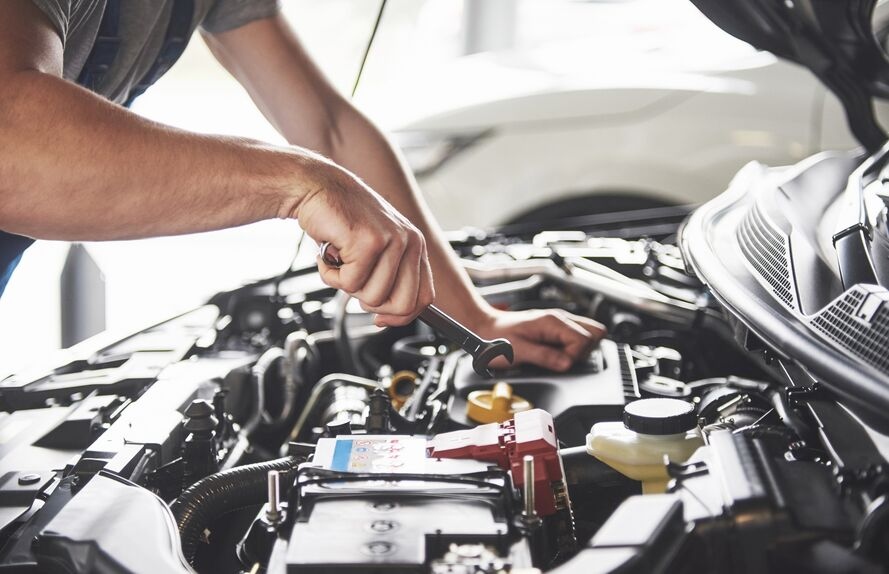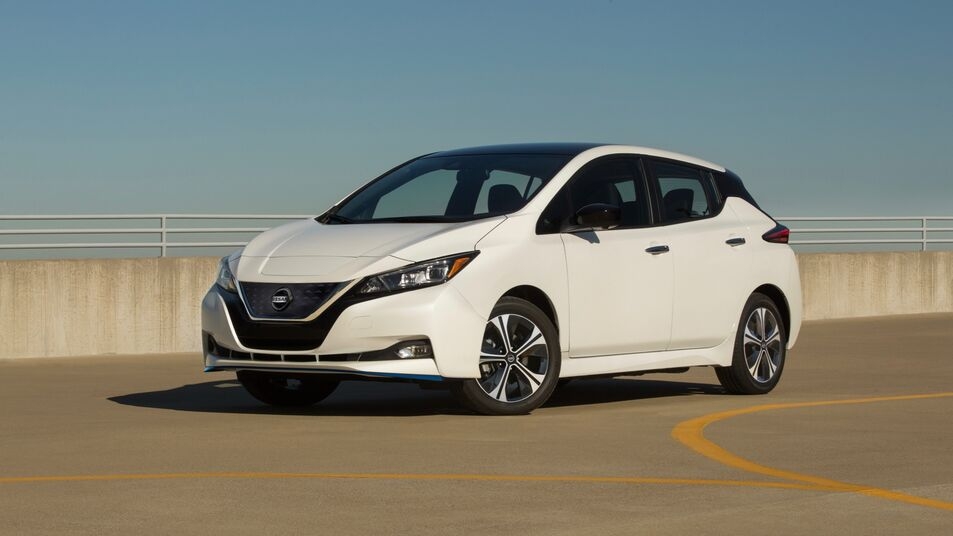Picture this: you’re late for work, you hop into your car, turn the ignition key, and… nothing. Just a faint click. Your heart sinks as you realize it’s a dead battery. Sound familiar? We’ve all been there, stranded in a parking lot or driveway, praying for a miracle. But here’s the good news—a dead car battery doesn’t have to ruin your day if you know how to jump it with jumper cables. Trust me, it’s easier than you think, and I’m here to show you how.
Why is this a must-know skill? For starters, it saves you time—no waiting hours for a tow truck or security service to bail you out. It also saves you money; did you know the average towing cost can hit $100 or more, according to AAA? Plus, being able to handle a dead vehicle battery yourself is a game-changer—especially in emergencies when you’re miles from an auto parts store. I’ve been in that spot, and let me tell you, it feels great to take control.
So, what’s in it for you? By the end of this guide, you’ll have a step-by-step plan to jump-start your car like a pro, plus safety tips and insider tricks to avoid a battery explosion or fried electronics. Whether you’re dealing with a 12-volt system or just curious about battery care technologies, you’ll walk away ready to tackle this common car hiccup. Ready to power up? Let’s go!
Tools and Materials Needed
Before you can jump a car, you need the right gear. Think of it like assembling a superhero kit for your engine compartment. Here’s what you’ll need—and why it matters.
- Jumper Cables: These are your lifeline to getting that dead battery back in action. A good pair should be 10-20 feet long—long enough to stretch between cars without a hassle. Look for 4-gauge or 6-gauge wire; the thicker stuff handles power flow better, especially for a liter gas engine. I prefer cables with 100-percent copper construction over ones with a copper coating or aluminum wire—copper wiring just delivers that boost more reliably. Pro tip: Check the alligator clips or metal clamps for a solid grip on battery terminals. Flimsy ones? No thanks.
- Working Vehicle: You’ll need a donor battery—aka a car with a fully charged 12-volt battery. Most cars run on a 12-volt system, so matching voltages is usually a breeze. The booster battery should have decent battery capacity, ideally similar to or bigger than your car’s. Ever tried jumping a hybrid vehicle with its auxiliary 12-volt battery? It works, but I’d stick to a standard car if you can.
- Safety Gear: Don’t skip this—safety’s not optional. Gloves keep your hands safe from accidental discharge or acid from a lead-acid battery. Safety goggles protect your eyes from sparks or debris flying off a metal component. And a flashlight? Total must-have for spotting the positive battery post or negative battery terminal in the dark. I learned that the hard way one rainy night.
- Optional Tools: A wire brush is clutch for scrubbing corrosion off battery posts—think of it as a spa day for your terminals. And if you’re like me, you might love a portable jump starter as a backup. These hand-portable battery devices are like battery chargers on steroids—no additional vehicle required. I’ve got a lithium-ion jump starter in my trunk, and it’s saved me more times than I can count.
Quick stat: The National Highway Traffic Safety Administration (NHTSA) says millions of motorists experience battery failure each year—don’t get caught empty-handed. Got your kit ready? Good—let’s keep going.
Understanding Your Car Battery
Your car battery is the heart of your ride—it’s what gets the engine running and powers everything from the electronic ignition to the power locks. But what happens when it flatlines? Let’s break it down.
Battery Basics
Most cars roll with a lead-acid battery, packed with battery plates dunked in an electrolyte solution. When you turn the ignition switch, it sends a jolt to the starter motor, cranking the engine into submission. That positive battery terminal (the red one) and negative battery terminal (the black one) are your connection points—think of them as the battery’s handshake with the car. A typical 12-volt battery might seem simple, but it’s a powerhouse for your engine block and beyond. Fun fact: A 10 amp-hour lead-acid battery can crank out serious juice, but it’s no match for lithium-ion batteries in terms of weight—those big, heavy, lead-acid jump packs are old-school for a reason.
Signs of a Dead Battery
How do you know your battery’s toast? Dim headlights are a dead giveaway—literally. If they’re flickering like a bad horror movie, your battery voltage is probably dipping. Then there’s the clicking noise when you turn the key—annoying, right? It means the jumper battery isn’t sending enough power to the engine. Worst case? No engine crank at all. Just silence. That’s your cue to grab the booster cables.
When Jumping Isn’t an Option
Not every dead battery can be revived with jumper cables. If it’s cracked, leaking, or frozen solid (yep, a frozen battery is a thing in brutal winters), jumping could lead to notable risks—like a battery explosion. The Battery Council International says extreme cold can zap up to 35% of a battery’s capacity, so a bad battery in January might be beyond help. If you spot acid oozing or smell something funky from the engine compartment, skip the DIY and call a dealership service center. Safety beats stubbornness every time.
Step-by-Step Guide: How to Jump a Car with Jumper Cables
Ever been stuck with a dead battery and no idea what to do? Don’t worry—jumping a car with jumper cables is easier than you think. It’s like giving your car a high-five from another battery to get it going again. Here’s a simple, step-by-step guide to bring that dead vehicle battery back to life.
Step 1: Position the Vehicles
First, park the working car close to the dead one—hood-to-hood or side-by-side works fine. Just make sure they don’t touch. Why? If they do, you could get a short circuit, and trust me, that’s a mess no one wants. Turn off both ignitions with the keys out and set the parking brakes. Oh, and if it’s a manual transmission, make sure it’s in neutral. Safety’s the name of the game here!
Step 2: Locate the Battery Terminals
Pop the hoods and find the battery terminals. You’re looking for the positive terminal (usually marked with a + and red) and the negative terminal (marked with a – and black). Some cars are tricky, though—batteries might hide under covers or in weird spots like the trunk. Confused? Grab the vehicle manual—it’s like your car’s cheat sheet. For hybrid vehicles, look for the auxiliary 12-volt battery, not the big electric car battery. Pro tip: Clean those battery posts with a wire brush if they look crusty—better connections mean better results.
Step 3: Attach the Jumper Cables
Here’s where it gets fun, but order matters big time. Mess this up, and you could see sparks or even a battery explosion—yikes! Grab your booster cables and follow this sequence:
- Clip the red positive clamp to the positive battery terminal on the dead car.
- Attach the other red clamp to the positive battery post on the working car’s booster battery.
- Connect the black clamp to the negative battery terminal on the working car.
- Finally, hook the last black clamp to an unpainted metal surface on the dead car—like the engine block or a metal strut. Why not the negative battery post? It cuts the explosion risk from hydrogen gas. Smart, right?
Make sure those alligator clips have a solid grip on the battery terminals. A loose connection is like a bad phone charger—nothing’s getting through.
Step 4: Start the Working Car
Fire up the working car’s engine and let it run for 2-5 minutes. This gives the dead battery a chance to soak up some juice from the donor battery. Think of it as a quick power boost—like a coffee break for your car. I like to rev the engine a little to speed things up, but don’t overdo it.
Step 5: Start the Dead Car
Now, turn the ignition key on the dead car. If it doesn’t start, don’t freak out. Wait a couple of minutes and try again. Sometimes that lead-acid battery just needs a little more time to wake up. If it’s still silent after 5 minutes, you might have a bigger problem—more on that later.
Step 6: Remove the Cables
Once the jump-started car’s engine is purring, it’s time to unplug those jumper cables. But slow down—do it in reverse order to avoid any shorts:
- Remove the black clamp from the unpainted metal on the dead car.
- Take off the black clamp from the negative battery terminal on the working car.
- Unclip the red clamp from the positive terminal on the working car.
- Finally, detach the red clamp from the positive terminal on the dead car.
It’s like unwrapping a present—careful and steady. Stow those cables neatly; I prefer ones with 100-percent copper construction—they last longer than cheap aluminum wire versions.
Step 7: Recharge the Battery
Don’t just drive off and call it a day. Take the revived car for a 20-30 minute spin—or let it idle—to let the alternator recharge the battery. This step’s crucial to avoid another dead car battery situation. It’s like letting your phone charge to 100% before unplugging—gives it some staying power.
Safety Precautions
Jumping a car isn’t rocket science, but it’s not without risks. Ever wonder why people say “be careful” around batteries? Because a little caution goes a long way. Here’s how to stay safe.
- Prevent Sparks: Don’t let the metal clamps touch each other or any metal objects under the hood. Sparks near a battery can ignite flammable hydrogen gas, and that’s a quick trip to battery explosion city. Keep those cables under control!
- Battery Condition: Check your automotive battery for leaks, cracks, or bulging before you start. A bad battery is trouble waiting to happen—think of it as a rotten apple. If it looks sketchy, skip the jump and call a dealership service center.
- Ventilation: Work outside or in a garage with the door wide open. Batteries release gases, and you don’t want to breathe that in an oily engine compartment. Fresh air is your best buddy here.
- Personal Safety: Wear gloves and goggles—seriously. Keep hair tied back and loose clothes away from the engine. I once saw a guy’s sleeve get snagged by a fan belt—yikes! Let’s avoid that drama.
- No Open Flames: Ban smoking or anything sparky near the battery. One wrong move with a lighter, and you’re testing fate with a lead-acid battery’s explosive potential. Not worth it.
Stat alert: The National Highway Traffic Safety Administration (NHTSA) says mishandling batteries leads to dozens of injuries yearly. Don’t be part of that club—play it safe!
Common Mistakes and How to Avoid Them
Even pros mess up sometimes, so don’t feel bad if you’ve made a mistake jumping a car. What’s the trick? Knowing what to watch out for. Here are the biggies and how to dodge them.
- Reversing Polarity: Ever hooked the positive clamps to the negative battery terminal? It’s an improper connection that can zap your car’s electronics—or worse. Double-check the colors: red to positive, black to negative. Color-coded metal clamps make it foolproof.
- Poor Connections: If the clamps slip or the battery terminals are corroded, power flow stalls. It’s like a clogged straw—nothing gets through. Clean the posts with a wire brush from an auto parts store and tighten those clips. Solid contact is key.
- Using Faulty Cables: Frayed battery cables or weak jumper cable battery clamps are useless. I’ve seen cheap ones with copper coating fail mid-jump—lame! Go for heavy-duty booster cables with copper wiring; they’re worth every penny.
- Rushing the Process: Don’t jump the gun—literally. Give the dead battery a couple of minutes to charge. Rushing is like baking cookies for half the time—they won’t turn out right. Patience saves the day.
Troubleshooting: What If It Doesn’t Work?
So, you’ve got the jumper cables hooked up, but the engine’s still silent. Frustrating, right? Don’t toss in the towel yet—here’s what might be wrong and how to fix it.
- Loose Clamps: If the black clips or positive clamps aren’t snug, you’re losing power. Tighten them up—think of it like tightening a loose shoelace. A good grip on battery terminals makes all the difference.
- Dead Battery Beyond Repair: If the battery voltage is under 10 volts (test it with a multimeter if you’ve got one), it’s probably toast. Consumer Reports says most 12-volt batteries last 3-5 years—older than that, and it’s time for a new one. Portable jump starters are a slick backup, too; I swear by lithium-ion jump starters over big, heavy lead-acid jump packs.
- Alternator Failure: Starts fine but dies fast? The alternator might be kaput. It’s supposed to charge the battery while the engine runs, so if the Check Engine Light pops on, head to a mechanic. Don’t ignore this one—it’s a sneaky troublemaker.
- Starter Issues: Hear a grinding noise when you turn the key? That’s not the battery—it’s the starter motor acting up. Jumping won’t help here; book a service appointment. It’s like the car’s saying, “I’m awake, but I’m grumpy!”
Alternative Methods to Start a Car
Jumper cables are great, but what if you don’t have them—or there’s no one around to lend a hand? No problem! Here are three awesome alternatives to kick that dead battery back into gear. These methods are practical, portable, and perfect for those “uh-oh” moments.
Portable Jump Starter
Picture this: You’re parked in the middle of nowhere, and your 12-volt battery is toast. No second car, no booster cables, no help in sight. Enter the portable jump starter—your new best friend! This little hand-portable battery device is like a power bank for your car. You just clamp the color-coded metal clamps onto your battery terminals—red to the positive battery post, black to the negative battery terminal—flip on the boost feature, and bam, your engine’s humming again. I love my lithium-ion jump starter; it’s lightweight, fits in my trunk, and doesn’t need an additional vehicle. According to AAA, portable jump starters can crank engines up to 6 liters with ease—pretty cool, right? Just make sure it’s got at least 400 amps for a standard liter gas engine.
Push-Starting (Manual Cars Only)
Got a car with a manual transmission? You’ve got a secret weapon: push-starting! Here’s the deal—shift into second gear, press the clutch, and get rolling (either with friends pushing or down a slight hill). Once you’re moving at a decent pace—say, walking speed—release the clutch fast. The engine gets forced into submission, and voilà, it starts! It’s like giving your car a running jump. But heads up: This only works for manual transmissions, not automatics, and it’s not the gentlest on your engine block. I’ve pulled this off a couple of times, and it’s a thrill—but I wouldn’t do it every day.
Battery Charger
Not in a hurry? A plug-in battery charger is your slow-and-steady savior. Unlike a battery booster, it’s all about patience. Hook it up to your dead vehicle battery—red clamp to the positive terminal, black clamp to the negative terminal—plug it into an outlet, and let it charge over a few hours. It’s like a spa day for your lead-acid battery, restoring its battery capacity bit by bit. I keep a smart battery charger in my garage for those lazy weekends when I’m not rushing out. Want to know more, visit our website…
Maintaining Your Car Battery
A dead car battery doesn’t have to sneak up on you. With a little TLC, you can keep your automotive battery humming for years. Think of it like brushing your teeth—simple habits make a big difference. Here’s how to stay ahead of the game.
Routine Checks
Ever peeked under the hood and seen funky white stuff on your battery terminals? That’s corrosion, and it messes with power flow. Grab some baking soda, mix it with water, and scrub those battery posts with a wire brush—red for positive, black for negative. Rinse it off, and you’re golden. I do this every six months, and it keeps my connections tight. Pro tip: AAA says clean terminals can boost your battery’s efficiency by up to 20%—who doesn’t want that?
Driving Tips
Short trips are sneaky battery killers. Why? They don’t give your alternator enough time—think 20-30 minutes—to recharge the battery fully. If you’re always zipping around for five minutes here and there, your battery’s losing capacity fast. Try a longer drive once a week to juice it up. I learned this after my battery died from too many quick errands—now I take the scenic route sometimes, and it’s a win-win!
Lifespan
Most 12-volt batteries last 3-5 years, but don’t wait for a total meltdown. If yours is hitting the four-year mark and cranking slow—or the Check Engine Light’s flickering—start shopping at auto parts stores. Consumer Reports notes that replacing a bad battery before it fails cuts roadside breakdowns by 25%. I swapped mine at year four, and it’s been smooth sailing since.
Cold Weather Care
Winter’s tough on batteries—did you know cold temps can slash battery capacity by up to 50%, per the Battery Council International? If you’re in a chilly spot, wrap your battery in a battery blanket or park indoors. It’s like tucking your battery into bed. I started doing this last winter, and my car’s never started faster on frosty mornings.
Frequently Asked Questions (FAQs)
Got questions about dealing with a dead battery? You’re not alone—millions of motorists experience this every year. Let’s tackle the top ones with simple, straight-up answers.
Can I Jump a Car With a Different Voltage Battery?
Nope! Stick to a 12-volt system—most cars use it. Mixing voltages (like a motorcycle battery or hybrids’ auxiliary 12-volt batteries) is a recipe for fried electronics. Check your vehicle manual if you’re unsure. Trust me, I’ve seen the sparks fly—don’t risk it!
How Long Should the Working Car Run Before I Try Starting Mine?
Give it 2-5 minutes. Let the donor battery send some juice through the jumper cables to your dead one—think of it as a quick recharge. If it doesn’t start, wait a couple more minutes. I usually sip my coffee and count to 120—works like a charm.
What If I Don’t Have Jumper Cables?
No jumper cables? No stress! A portable jump starter’s your go-to, or call a security service like roadside assistance—they’ll bring a battery jumper pack. I’ve been stuck without cables before, and a quick call saved the day.
Can Jumping Damage the Donor Car?
It’s rare, but an improper connection—like mixing up the positive clamps and negative clamps—can cause trouble. Double-check polarity (red to positive terminal, black to unpainted metal or negative terminal), and you’re safe. I’ve jumped tons of cars, and as long as you’re careful, it’s all good.
How Do I Know If My Battery Needs Replacing?
If it won’t hold a charge after a jump—like it dies again after a short drive—it’s toast. Other clues? It’s over five years old, or you’re losing battery capacity (dim lights, slow starts). Time for a new one—I’ve been there, and it’s better to swap early than get stranded.
Conclusion
So, there you go—everything you need to tackle a dead car battery like a pro! Whether you’re using jumper cables, a portable jump starter, or just giving your battery some love with routine checks, it’s all about staying prepared. Safety’s key—watch those battery terminals and keep the parking brake on—and a little maintenance goes a long way. Fun fact: AAA says 1 in 3 drivers will face a battery issue this year—don’t be caught off guard!
Here’s my challenge to you: Grab a buddy, find a safe spot, and practice these steps. It’s like a mini adventure—connect the metal clamps, fire up the engine, and feel that rush of “I got this!” Got a crazy jump-start story or a question? Share it in the comments—I’d love to swap tales. We’ve all faced that dead battery moment; now you’ve got the know-how to handle it!









